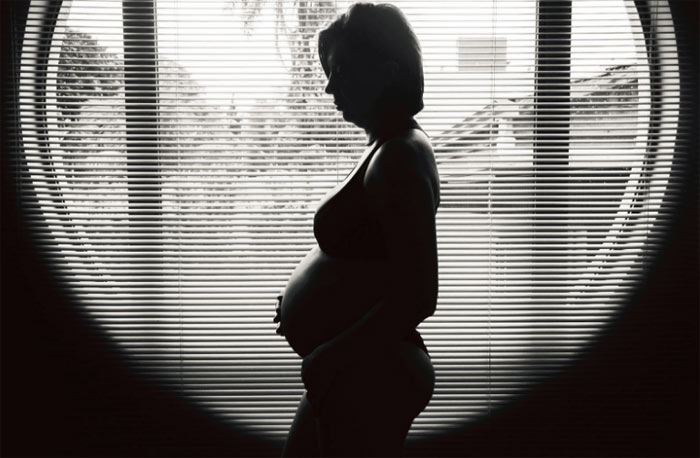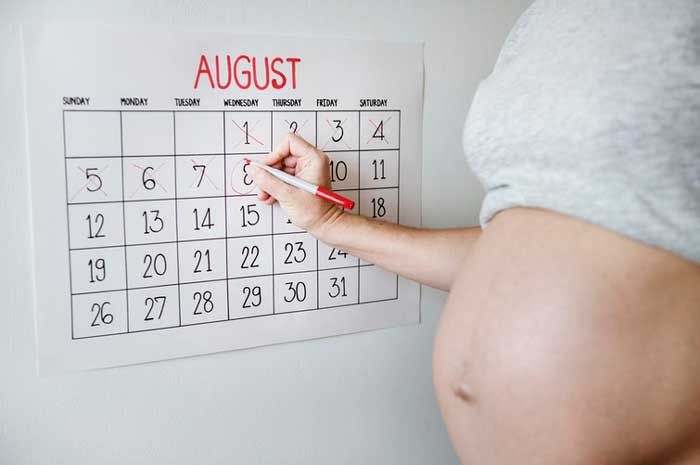15 Points Doctors Are Unable to Clear up for Mothers
In spite of begetting progeny for a long, long time, human beings failed to gain a complete understanding of the process; some aspects of it remain mysterious. Scientists, based on historical material, produce reams of studies in an attempt to attain the grasp of all the intricacies. Still, there are things that escape the scientific mind. Both pregnancy and delivery can be very unpredictable. Although doctors spend years getting the education (and then working in residency), they are in doubt about quite a few points, some of the fundamental.
So it happens that you come to a professional with questions that are crucial for your smooth pregnancy – and get evasive, theoretical answers, only to realize that there is no clear-cut explanation, nothing but more or less accurate surmise. A few of these questions would be on the odd side, but with some, the issues may be serious and even tragic.
Needless to say, research is going on, and as our technology gets more sophisticated and knowledge grows, there may come a day when mothers will have all the facts at their service with a full understanding of what is happening with their bodies and the fetus. All the processes will be totally controlled. Meanwhile, some answers are not coming yet. Here are the most important of them.
Babies prefer workdays
Mothers-to-be assume (or are informed by their mothers or female relatives) that the baby can come any day, any time. Of course it can’t be contradicted, but actually, surprising though it may seem, as for the United States, babies tend to come out on weekdays as opposed to weekends. It has no relation to the five-to-two ratio, the point is that any day from Monday to Friday has more kids born compared to Saturday or Sunday. Not all doctors may be aware of the phenomenon, probably because there is no tangible explanation of why babies prefer workdays – they are still amassing data.
How soon will it be over?
Having passed through hours and hours of acute and exhausting labor, moms-to-be gets further informed that it will be succeeded by a second spell which is known rather loosely as “the pushing stage”. They are told it is not supposed to last longer than two hours. Actually, nobody is quite sure how long this second spell may go on because it depends on many different factors. For example, whether it is the woman’s first time delivering or whether she had an epidural could affect the duration.
The secret of cravings
Pregnancy is the time when a lot of women begin to crave for some particular food. There are cultures which believe that one can tell the gender of the baby by the food the mother craves as well as other details about the coming baby like the amount of hair on his body. Experts tend to link cravings to hormonal changes or maybe meeting nutrition needs. Anyway, it can’t be said with a 100% certainty. There are some who insist cravings are emotion-caused since women are known to crave non-eatable things. Yet all these theories remain unproven for no direct correlations were ever established.
The reasons behind cholestasis
Intrahepatic cholestasis of pregnancy, or ICP, is one of the rarer complications; it is a liver disease afflicting maybe two in a 1000 women bearing children. It may be brought about by the hormone storm in the last trimester, but some strange correlations were discovered with geography. South American and Scandinavian women seem to be more susceptible to ICP, and a genetic component appears to be active. Also, winter is the time when women develop ICP more frequently. Apart from that, no other risk factors are known, and doctors are at sea about what brings this condition about.
Nausea spells
In public mind when a woman feels sick in the morning, it is a sure sign of pregnancy. Yet what is known as morning sickness is something very different from one woman to another. In bad cases, a would-be mother can experience severe nausea and vomit so much that their body dehydrates quickly and they lose weight. Specialists can’t tell what makes one woman suffer from acute nausea so much they can be hospitalized while other women go through their pregnancy without ever feeling sick at all. A hypothesis links hyperemesis gravidarium with a high hormonal level – although there are women whose hormone level should trigger plenty of nausea, it doesn’t. Doctors cannot predict how bad nausea is going to be in each particular case.
The mystery with spotting
Every fourth expectant mother has a breakout of spots. Going all over in spots could mean there is a grave health issue; on the other hand, it could be a cervical polyp or suchlike small thing. Again, without any explanation spotting can start on a small scale and grow to frightening proportions (though it doesn’t happen often). It can occur even before the woman realizes she is big with child. They may believe they’re undergoing a period when suddenly labor begins. Spotting doesn’t mean there is something wrong with the baby.
September is the best month for babies
The beginning of fall turns out to be the greatest time for delivering children. Nobody knows how come more babies are born in September – probably winter creates good vibes for conceiving, or, in a pristine way, cold season draws people together to cuddle and seek warmth. It’s funny but it has been the most popular child month for only ten years – before that it was August which held its own for 16 years. Of course, people’s birthdays fall on every day from January to December, but there is always a month that comes out a winner for the number of birthdays.
The duration of labor
Some moms go into labor for days, while with others it happens so quickly that they are rushed to the hospital and may not make it in good time. Both extremes – as well as anything that comes in between – are perfectly normal. No doctor will be able to foretell what to expect. Labor duration is sometimes modeled to outdated ideas about how long labor ought to last. The previous labor model was worked out back in the 1950s, things have dramatically changed since then. Doctors don’t have all the facts related to the process, so they cannot figure out how long it may last and what it depends on.
The infertility plague
When a couple wants to go the family way, the worst thing that can happen to them is when after several unsuccessful attempts they face the diagnosis of infertility. In many cases, the reasons for infertility are not clear, and about 25% of luckless couples hear that their sad condition cannot be satisfactorily explained. It means that all doctors’ attempts to discover the cause have failed. If that happens, couples are recommended to get a second expert opinion in case the first specialist missed a symptom or two. Unfortunately, there is no guarantee that there will be any positive results.
The HELLP issues
The elusive HELLP syndrome became known as such in the year 1982, but now, more than 30 years later, it is still very much a mystery, not yielding itself easily to both diagnosis and treatment. As for diagnosing, HELLP doesn’t always show the same set of symptoms with every patient, and some of its symptoms could be misinterpreted for preeclampsia or some other condition. As for treatment, the perfect scenario would be for the woman with HELLP to give birth before her condition has become more serious. Actually, HELLP is believed to be linked to preeclampsia, but it remains unknown why some future mothers develop HELLP while others remain immune. The syndrome is more harmful since there’s no known way to prevent it.
Colic as a source of troubles
Newborn babies are often found to have colic; it occurs so frequently that you would have thought doctors know everything about it. Not at all. Nobody knows yet what causes the condition. The thing is, colic is quite a wide term, which contributes to the difficulty of detecting it. Meanwhile, many parents amass frustration attempting to calm down colicky babies who cry unceasingly. While it is understood that a crying baby is telling the world that something is not quite right, he can’t very well explain what it is, and it can be a wide range of problems. Studying colic, researchers delved into hormones, gut bacteria, and allergy, but so far they haven’t progressed much.
The baby’s memory
Now and then we get to hear people telling that they can remember what was going on around them from day one. Generally, such statements are met with disbelief, experts being sure that people lose access to their earliest memories – although there’s no knowing why it is so. This inability is called infantile amnesia. The predominant belief is we lose these memories because at the time we are not in the possession of the language to solidify the impressions; some scientists, however, point out that other animals also don’t seem to be able to recall their first weeks of life. It is possible that when new neuron connections begin to develop at a high tempo, the oldest memories are often eliminated.
How labor is triggered
The general idea says that labor begins when the level of lung surfactant protein has reached a certain level. Then macrophages (they prevent infections in the lungs) get activated; they relocate to the uterine wall and set off a chemical reaction. While the majority of babies begin to generate protein (which is necessary for the process) in 32 weeks or so, some babies start generating later than that, and there are cases when babies come out before the process is complete. Then there are antibodies that hamper the growth of the protein content. So many issues are involved that scientists haven’t grasped all the intricacies yet.
The secrets of premature births
The instances of premature births which cannot be easily explained are different in number from one country to another and from one population group to another. It is nothing unusual if about 30% of premature births baffle doctors and experts and seem to be quite a spontaneous affair. Once the recognized factors like diabetes, infection, cervical incompetence, are cleared away, no good explanation can be put forward. Some births that were premature due to undetected reasons can be accompanied by risk factors, but whether they were instrumental in bringing about premature birth cannot be stated definitely. Pregnant women were even known to undergo premature labor for no apparent cause when delivery had to be delayed in order to enable the fetus to develop properly.
Sudden prolapses
An important factor we all would like doctors to clear up is pelvic organ prolapse, a condition registered with about 3-4% of moms who had a natural delivery. The problem can arise rather late when the woman is in her middle age. Prolapse can lead to grave complications like urinary stress incompetence that could at times require surgery to put things right. Sufferers can avail themselves of numerous websites carrying special exercises designed to weaken the symptoms. It is advisable to describe the condition to a doctor because a hysterectomy may turn out to be a perfect solution instead of thinking up measures of preventing prolapse.
Tragic losses
One of the darkest and most heart-rending mysteries of delivery is when the baby, having been strong and healthy the day before, suddenly becomes still on the following day. The stricken mother has only one slight consolation – to learn why it happened this way. But this consolation is often denied to her. In some cases the loss can be put down to infection, existing genetic problems, or a mischance with the umbilical cord. Yet sometimes doctors can do nothing but shrug their shoulders. Especially when it occurs without any warning, there is no hemorrhage, no cramps, but the baby is suddenly terrifyingly quiet. A good idea is to count kicks a couple of times per day – such vigilance might just prevent a tragic end.





